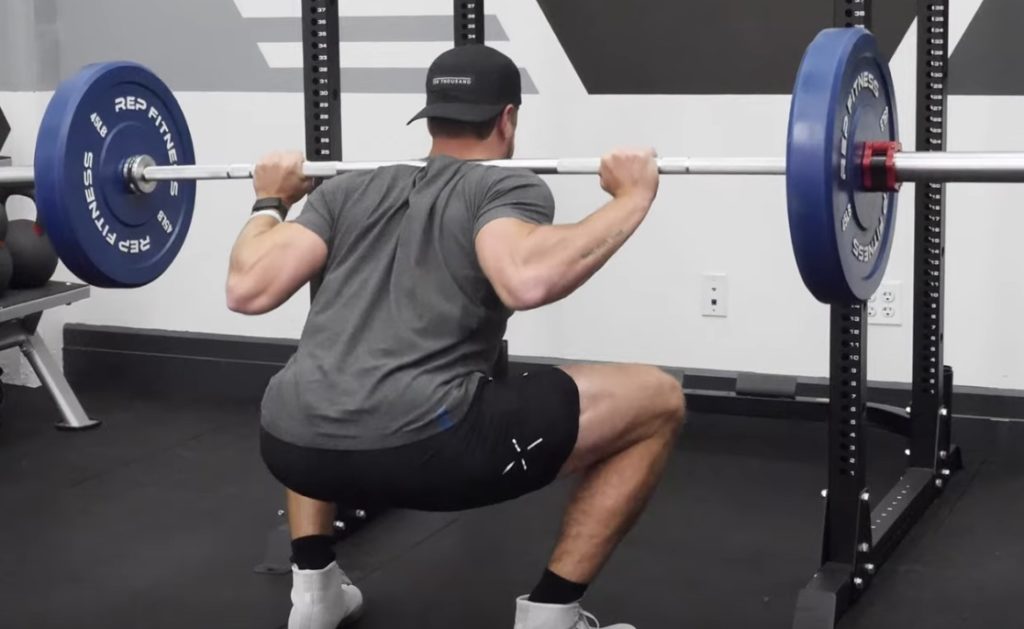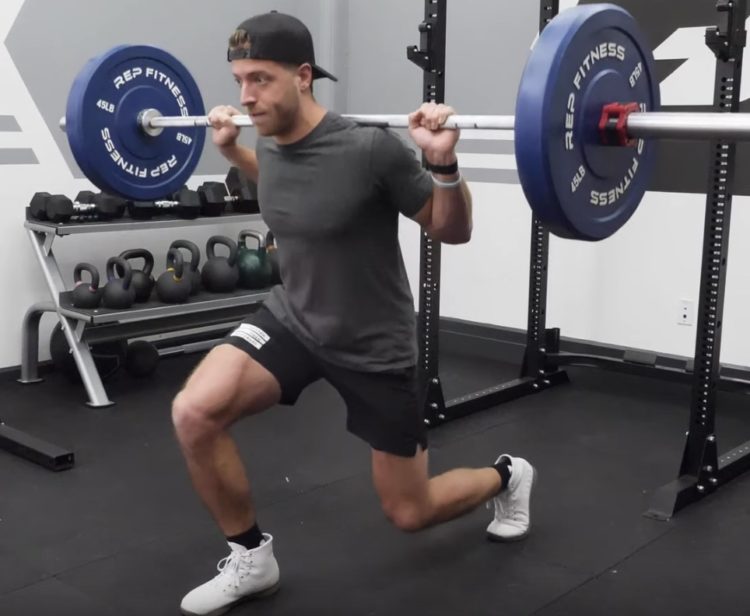If you’re on the never-ending quest of improving your training cycles, then you may want to look into adding 1 ½ reps to your training toolbox. In my opinion, the best training tools are the ones that don’t alter your processes too much, but provide a ton of bang for your buck, and this is exactly the inspiration for this article.
More than likely you’ve seen 1 ½ reps used in practice before, and you may have wondered — why is that athlete performing a half rep in-between their full reps?
Well, there are plenty of reasons and benefits for doing so, and generally, they’re individual for an athlete’s goals. We know full reps provide an adaptation (strength, power, hypertrophy, etc.) on a macro scale based on volume, intensity, frequency, and so forth, so what additional benefits can half reps provide?
In this article, we’re going to cover 1 ½ reps and three benefits that come along with this rep scheme. If you’re a visual learner, then check out the detail below for full details about this rep scheme!
What Are 1 ½ Reps?
In their most simple definition, 1 ½ reps are when you perform a full rep, then proceed to complete a half rep. One full rep with this rep scheme is counted when you complete a full rep and half rep together.
This concept is nothing new in strength training, however, it’s a pretty underutilized tool.
The half rep’s range of motion is generally at the halfway point of the full rep, but it can be altered depending on the adaptation being sought out. For example, if there’s a technical breakdown in the squat just out of the hole, then a coach may utilize that range of motion (problematic area) for the half rep compared to what is traditionally defined as “halfway” through the rep.
Other Names for 1 ½ Reps: One and a quarter reps or rep and a half
1. Increased Time Under Tension
The fundamental premise behind 1 ½ reps is that they prolong and extend singular sets. As opposed to adding more sets to a workout, 1 ½ reps are a nice and subtle way to increase time under tension for individual sets, which then results in an overall increase of time under tension.

For some coaches, using 1 ½ reps can be a useful progressive overload method for increasing total time under tension, or time spent executing a particular movement.
A few scenarios where this is relevant and useful include:
- Lifters that want to improve hypertrophy without increasing load.
- Athletes that need to spend higher amounts of time performing a particular movement for a sport.
- Athletes that want to train and add volume for an abbreviated portion of an exercise.
Time under tension can be a powerful training tool when things like tempo and range of motion are accounted for. If you’re new to using 1 ½ reps, start with lighter intensities to ease into the extra half reps, as they can add up quickly.
Generally, it’s a good idea to first use 1 ½ reps first on accessories, then progress to using them on your compounds with an accessory mindset, as your breathing patterns and partition of energy will need to be reworked slightly for the abbreviated reps. For example, if you’re using 1 ½ reps for compounds, then start by using them as a byproduct of your main working sets and load them with less weight than your normal, full reps.
Additionally, the extra volume accrued from 1 ½ reps can sneak up on you quick in compounds, so using them on accessories or with an accessory mindset is a good way to account for the additional recovery and variables needed to be successful.

2. Reinforce Technical Proficiency/Improve Sticking Points
On top of increasing time under tension, 1 ½ reps are a great tool for improving technical proficiency in various movements and blasting through sticking points. What ensures longevity in the gym outside of following well-written programs and proper recovery? Mechanical proficiency in exercises.
The use of 1 ½ reps are great for improving a lifter’s focus of executing great reps because they require more mindfulness on how the body is moving. I like to compare 1 ½ reps to any sport drill that requires an athlete to stop on a dime, then execute a movement or exert power in a different direction.
Below are two scenarios where 1 ½ reps can be useful for improving technical proficiency and these include:
- Beginners that have good form, but need form reinforcement through various ranges of motion, or need to work on general body awareness.
- Example: Understanding what it feels like to contract the glutes and quads during the concentric and eccentric portions of the squat. The additional half rep can help beginners feel the difference between “good” and “poor” reps through targeted ranges of motion.
- Intermediate or advanced athletes that want to improve on force exertion when in a disadvantageous position (work through sticking points).
- Example: Improve force shift coming out of the hole of the squat or bar speed off the chest during a bench press. 1 ½ reps limit some of the normal momentum that can come from the full eccentric.
For beginners, use 1 ½ reps with lighter intensities/loads, and for more advanced lifters experiment with various volumes and intensities that accommodate for your current training block goals.

3. Mental Tenacity
An increase in weight on the bar not only improves strength, but also mental fortitude. It takes confidence to move heavy weight. However, an increase in weight is not the only way to build a strong, tenacious mind in the gym — insert: 1 ½ reps.
Think about the last time you had a great pump and as you got to the final reps they seemed nearly impossible, but you persevered and pushed through. Or consider the last time you went for a run and made a time/distance goal and told yourself you wouldn’t quit until you reached that point.
In the gym, 1 ½ reps can have a similar effect on building a strong mentality when programmed on a routine basis. When you increase the total time you have to perform a set, then you’re going to reach whole new levels of discomfort and this can then teach you mental toughness when executing exercises.
Wrapping Up
In the gym, 1 ½ reps can be an incredibly useful tool for pursuing multiple training benefits. If you’re trying to improve your overall hypertrophy training or strengthen various ranges of motion within exercises, then try using 1 ½ reps in your workouts.